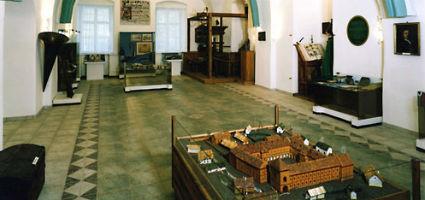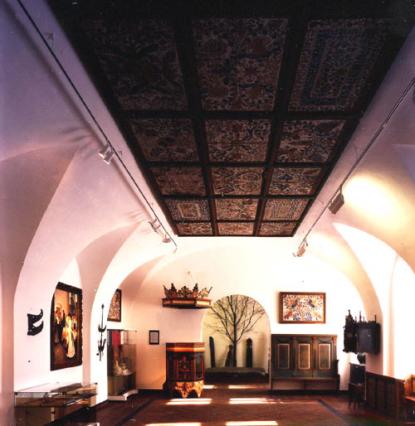2024. November 22. Friday
The Museum of the Reformed Collage of Debrecen - Debrecen
 |
Address: 4044, Debrecen Kálvin tér 16.
Phone number: (52) 516-856, (52) 516-857, (52) 516-923
E-mail: muzeum@silver.drk.hu
Opening hours: 11.04-31.05.: Closed
|
Museum tickets, service costs:
|
Ticket for adults
|
900 HUF
|
|
|
Individual ticket for adults
|
1300 HUF
|
|
|
Group ticket for adults
|
800 HUF
|
|
|
Ticket for students
|
500 HUF
|
|
|
Individual ticket for students
|
800 HUF
|
|
|
Ticket for pensioners
|
500 HUF
|
|
|
Ticket for families
(max. 2 adults + 4 children)
|
2000 HUF
|
/ family
|
|
Guide
|
3000 HUF
|
|
|
Guide
|
4000 HUF
|
|
|
Guide
|
4000 HUF
|
|
|
Guide
|
5000 HUF
|
|
|
Audio guide
|
500 HUF
|
|
|
Photography
|
200 HUF
|
|
|
Video
|
1600 HUF
|
Regardless of the lack of worshipping pictures, statues and relics, even the poorest Calvinist denomination made the place of their worship by an uplifted spirit. As a result of this the small white Calvinist churches many times were decorated by a beautifully painted enteriour and the treasures of the Hungarian embroydery and goldsmith items.

Our exhibition provides a selection of the coloured-flowered pieces of furniture, pulpits, ceilings and coffins made by the rural woodworker and cartwright workers.
Debrecen used to be the centre of the Hungarian goldsmith art. The craftsmen formed a specific style for their silver cans and cups. Besides the works of the goldsmiths of Debrecen and Augsburg, the exhibition provides a rich scale of textiles of the 17-18th centuries. We can trace back how the mixture of the renaissance and the Turkish influence made up a specificly Hungarian style.

Our exhibition provides a selection of the coloured-flowered pieces of furniture, pulpits, ceilings and coffins made by the rural woodworker and cartwright workers.
Debrecen used to be the centre of the Hungarian goldsmith art. The craftsmen formed a specific style for their silver cans and cups. Besides the works of the goldsmiths of Debrecen and Augsburg, the exhibition provides a rich scale of textiles of the 17-18th centuries. We can trace back how the mixture of the renaissance and the Turkish influence made up a specificly Hungarian style.
